Halved section of Wych Elm Handrail In the open For 15 Years (x0.75) |
|
|
| Severe upper surface
deterioration from fungus, algae, worm and lichens. I've cut the rail down middle to show that the inner wood which is slightly stained from fungal attack and a couple of filled worm holes. Otherwise the timber's reasonably sound inside. |
| Close Up of Exposed Handrail (x5) |
 |
| Shows fracturing of wood into cubic
surface pattern from alternate wet and dry weather which provides damp crevices attracting both fungus and algae. |
| Old Exit Hole (x12) |
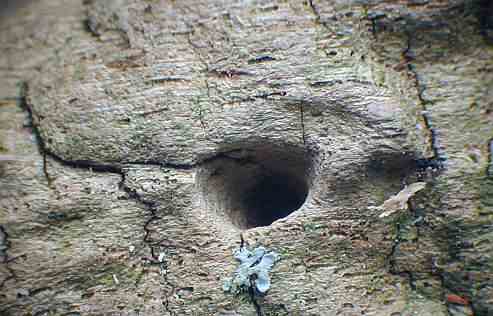 |
| Close-up of worm/beetle exit hole
showing signs of weathering indicating the hole is a few years old. Note the early establishment of blue green lichen. |
Pair Of Worm/Beetle Exit Holes (x 12) |
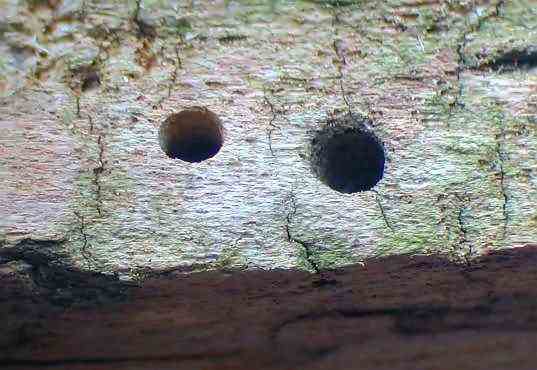 |
| Two exit holes chewed out several
years apart. New holes are amazingly sharp edged. The one left is probably last years'. Note the surface cracks and in particular the colonisation of green algae communities along their edges, where moisture will tend to remain in dry spells. |
Old Floorboard's Inner Maze of worm galleries (x2) |
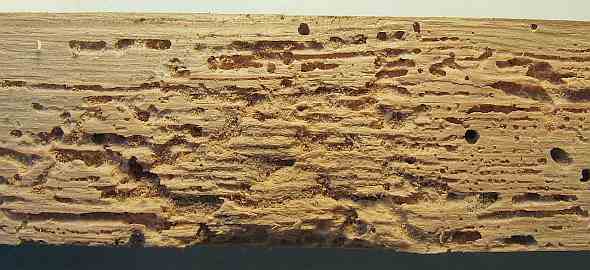 |
This is a narrow sawn section of an old 75 year old floorboard, which after planing revealed the true extent of the wood borer's activities. Note the range of hole diameters and the longitudinal galleries. |
| Side view of Floorboard' edge (x3) |
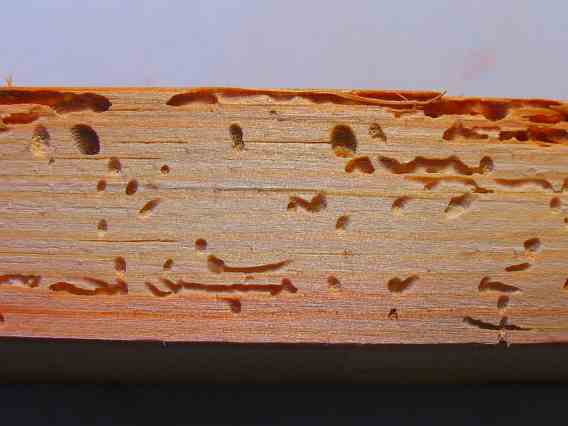 |
| Note the activity of the
borers is mostly confined to the starch richer layers of
spring wood between the alternating darker bands of summer wood. Transition from one layer to another accounts for the forays through the denser summer wood. Image colour saturation was deliberately increased to show summer wood. The heartwood which lies beneath the sapwood is rarely affected in this particular wood species. |
| Close-up of cross section of internal gallery (x25) |
 |
| Shows the 'bite marks' from the larva's pincers or mandibles. |
| Wood Boring Larva (x15) |
 |
Typical 'grub' probably Anobium Punctatum |
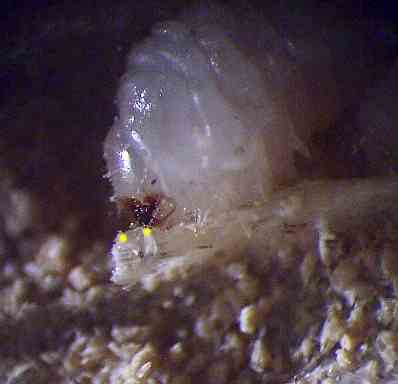 |
Pincer like mouth show tips apart (X35). Note the pellets which are the waste products after digestion. |
| Unfortunately all the images
above have had to be severely compressed to enable
uploading owing to my poor dial-up connection. Their quality is unfortunately not up to the standard that I'd ideally wish them to be. |
